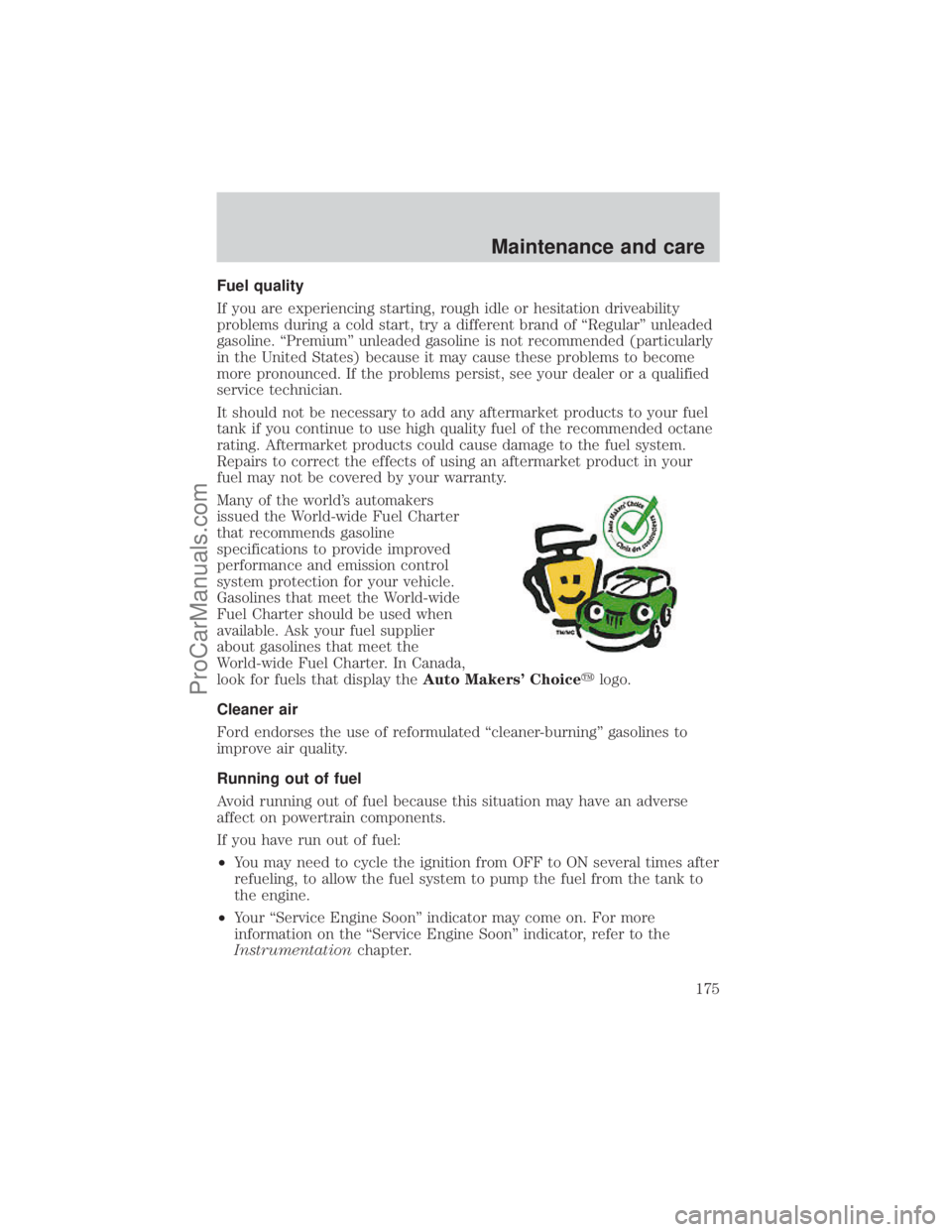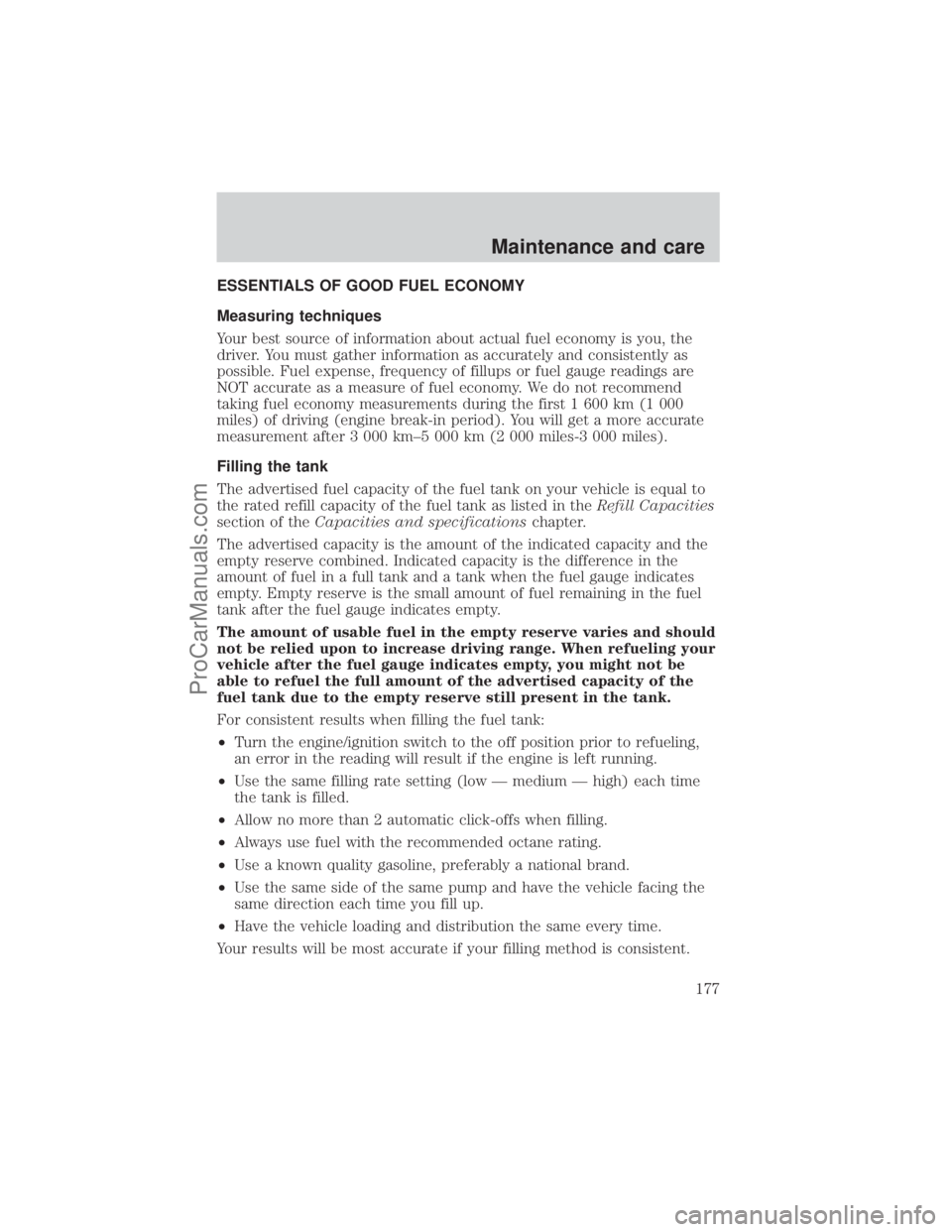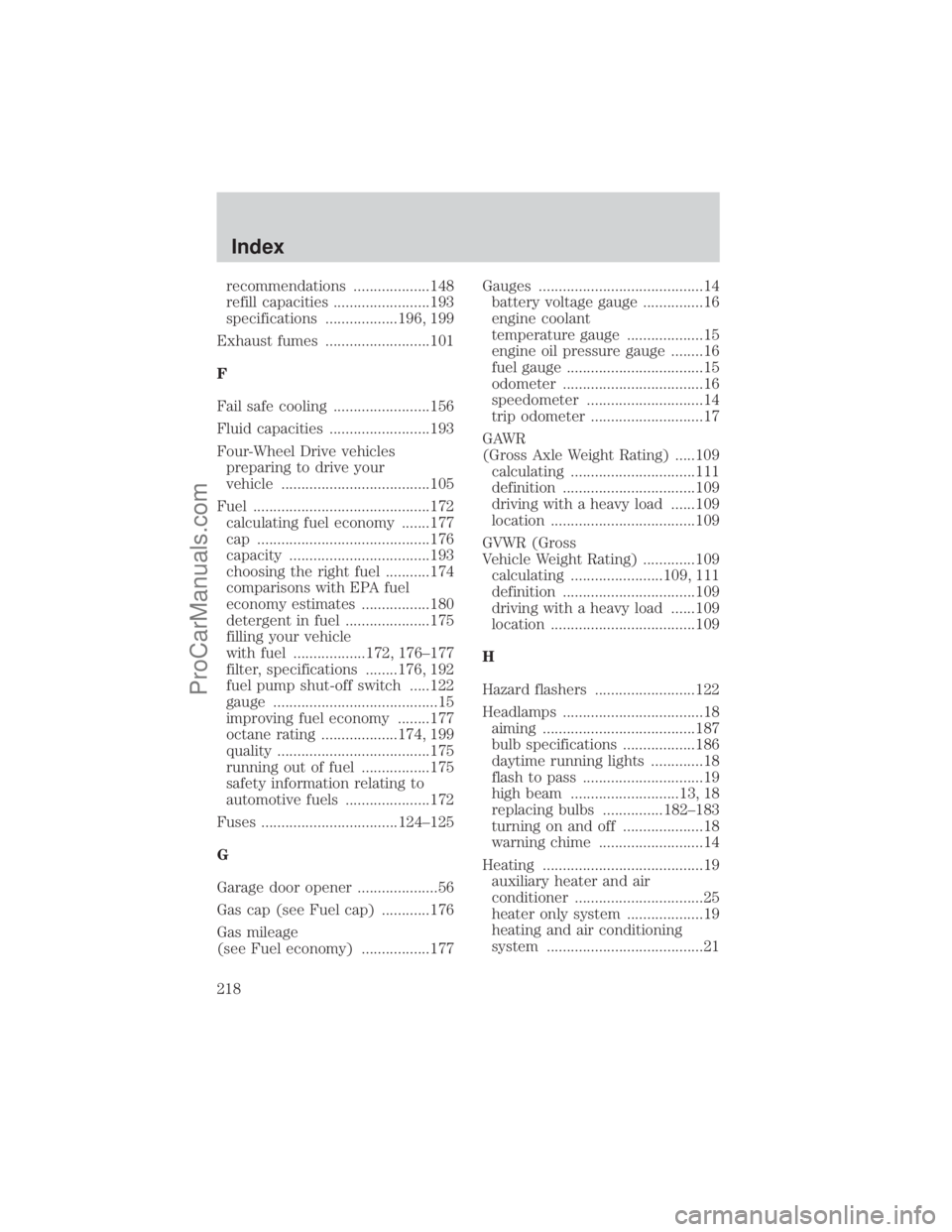Page 175 of 224

Fuel quality
If you are experiencing starting, rough idle or hesitation driveability
problems during a cold start, try a different brand of ªRegularº unleaded
gasoline. ªPremiumº unleaded gasoline is not recommended (particularly
in the United States) because it may cause these problems to become
more pronounced. If the problems persist, see your dealer or a qualified
service technician.
It should not be necessary to add any aftermarket products to your fuel
tank if you continue to use high quality fuel of the recommended octane
rating. Aftermarket products could cause damage to the fuel system.
Repairs to correct the effects of using an aftermarket product in your
fuel may not be covered by your warranty.
Many of the world's automakers
issued the World-wide Fuel Charter
that recommends gasoline
specifications to provide improved
performance and emission control
system protection for your vehicle.
Gasolines that meet the World-wide
Fuel Charter should be used when
available. Ask your fuel supplier
about gasolines that meet the
World-wide Fuel Charter. In Canada,
look for fuels that display theAuto Makers' Choiceylogo.
Cleaner air
Ford endorses the use of reformulated ªcleaner-burningº gasolines to
improve air quality.
Running out of fuel
Avoid running out of fuel because this situation may have an adverse
affect on powertrain components.
If you have run out of fuel:
²You may need to cycle the ignition from OFF to ON several times after
refueling, to allow the fuel system to pump the fuel from the tank to
the engine.
²Your ªService Engine Soonº indicator may come on. For more
information on the ªService Engine Soonº indicator, refer to the
Instrumentationchapter.
Maintenance and care
175
ProCarManuals.com
Page 177 of 224

ESSENTIALS OF GOOD FUEL ECONOMY
Measuring techniques
Your best source of information about actual fuel economy is you, the
driver. You must gather information as accurately and consistently as
possible. Fuel expense, frequency of fillups or fuel gauge readings are
NOT accurate as a measure of fuel economy. We do not recommend
taking fuel economy measurements during the first 1 600 km (1 000
miles) of driving (engine break-in period). You will get a more accurate
measurement after 3 000 km±5 000 km (2 000 miles-3 000 miles).
Filling the tank
The advertised fuel capacity of the fuel tank on your vehicle is equal to
the rated refill capacity of the fuel tank as listed in theRefill Capacities
section of theCapacities and specificationschapter.
The advertised capacity is the amount of the indicated capacity and the
empty reserve combined. Indicated capacity is the difference in the
amount of fuel in a full tank and a tank when the fuel gauge indicates
empty. Empty reserve is the small amount of fuel remaining in the fuel
tank after the fuel gauge indicates empty.
The amount of usable fuel in the empty reserve varies and should
not be relied upon to increase driving range. When refueling your
vehicle after the fuel gauge indicates empty, you might not be
able to refuel the full amount of the advertised capacity of the
fuel tank due to the empty reserve still present in the tank.
For consistent results when filling the fuel tank:
²Turn the engine/ignition switch to the off position prior to refueling,
an error in the reading will result if the engine is left running.
²Use the same filling rate setting (low Ð medium Ð high) each time
the tank is filled.
²Allow no more than 2 automatic click-offs when filling.
²Always use fuel with the recommended octane rating.
²Use a known quality gasoline, preferably a national brand.
²Use the same side of the same pump and have the vehicle facing the
same direction each time you fill up.
²Have the vehicle loading and distribution the same every time.
Your results will be most accurate if your filling method is consistent.
Maintenance and care
177
ProCarManuals.com
Page 218 of 224

recommendations ...................148
refill capacities ........................193
specifications ..................196, 199
Exhaust fumes ..........................101
F
Fail safe cooling ........................156
Fluid capacities .........................193
Four-Wheel Drive vehicles
preparing to drive your
vehicle .....................................105
Fuel ............................................172
calculating fuel economy .......177
cap ...........................................176
capacity ...................................193
choosing the right fuel ...........174
comparisons with EPA fuel
economy estimates .................180
detergent in fuel .....................175
filling your vehicle
with fuel ..................172, 176±177
filter, specifications ........176, 192
fuel pump shut-off switch .....122
gauge .........................................15
improving fuel economy ........177
octane rating ...................174, 199
quality ......................................175
running out of fuel .................175
safety information relating to
automotive fuels .....................172
Fuses ..................................124±125
G
Garage door opener ....................56
Gas cap (see Fuel cap) ............176
Gas mileage
(see Fuel economy) .................177Gauges .........................................14
battery voltage gauge ...............16
engine coolant
temperature gauge ...................15
engine oil pressure gauge ........16
fuel gauge ..................................15
odometer ...................................16
speedometer .............................14
trip odometer ............................17
GAWR
(Gross Axle Weight Rating) .....109
calculating ...............................111
definition .................................109
driving with a heavy load ......109
location ....................................109
GVWR (Gross
Vehicle Weight Rating) .............109
calculating .......................109, 111
definition .................................109
driving with a heavy load ......109
location ....................................109
H
Hazard flashers .........................122
Headlamps ...................................18
aiming ......................................187
bulb specifications ..................186
daytime running lights .............18
flash to pass ..............................19
high beam ...........................13, 18
replacing bulbs ...............182±183
turning on and off ....................18
warning chime ..........................14
Heating ........................................19
auxiliary heater and air
conditioner ................................25
heater only system ...................19
heating and air conditioning
system .......................................21
Index
218
ProCarManuals.com